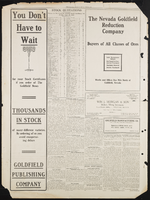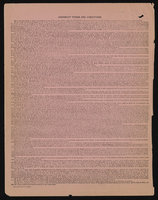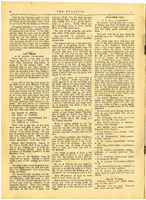Search the Special Collections and Archives Portal
Search Results
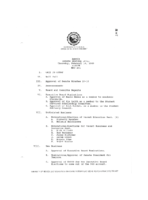
Meeting minutes for Consolidated Student Senate University of Nevada, Las Vegas, February 16, 1989
Date
Archival Collection
Description
Text
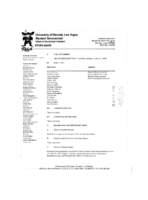
Meeting minutes for Consolidated Student Senate, University of Nevada, Las Vegas, August 14, 2000
Date
Archival Collection
Description
Text
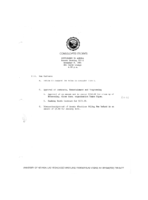
Meeting minutes for Consolidated Student Senate University of Nevada, Las Vegas, November 8, 1984
Date
Archival Collection
Description
Text
New York-New York Hotel and Casino 9-11 Heroes Tribute Collection
Identifier
Abstract
The New York-New York Hotel and Casino 9-11 Heroes Tribute Collection consists of materials from the "Heroes of 9-11" display that was at the New York-New York Hotel and Casino in Las Vegas, Nevada from 2001 to 2012. The materials primarily consist of more than 5,000 t-shirts left at the memorial by visitors to Las Vegas, mostly from fire departments and law enforcement agencies from around the United States. Visitors left shirts and other items at the memorial as a sign of respect for the men and women who died during the terrorist attacks in New York City and Washington, D.C. on September 11, 2001. The collection also houses memorabilia and other items left at the memorial, including flags, hats, pins, buttons, flowers, and embroidered emblems and insignias. The materials also contain documentation of the memorial, including promotional and press materials, video recordings from the news media, photographs, and newspaper articles.
Archival Collection
Irwin and Susan Molasky Papers
Identifier
Abstract
The Irwin and Susan Molasky Papers (early 1900s-2012, bulk 1970-2012) primarily contain materials related to real estate development work by Irwin Molasky with his company, the Molasky Group of Companies, in Las Vegas, Nevada. In addition, the collection includes personal photographs (early 1900s-2011, bulk 1970-2011) of family members, friends, and events, as well as a Proclamation from Clark County, Nevada to establish the Molasky Family Park.
Archival Collection
Sierra Club Toiyabe Chapter Records
Identifier
Abstract
The Sierra Club Toiyabe Chapter Records (1951 to 2021) are composed of files from Sierra Club officers and environmental activists in the Southern Nevada (formerly Las Vegas) Group of the Toiyabe Chapter. The collection documents the involvement of the Southern Nevada group in a variety of environmental concerns, such as air quality, transportation, urbanization, and nuclear issues, in which the chapter has expressed interest. The records are comprised of correspondence, memoranda, meeting minutes and agendas, newspapers, magazines, newsletters, pamphlets, press releases, legislation, recommendations, resolutions, and general information. Due to the group’s location in the heart of the Mojave Desert, the collection provides excellent case studies of significant changes in the post-World War II American environmental movement, notably the increased recognition of the worth of desert lands.
Archival Collection

